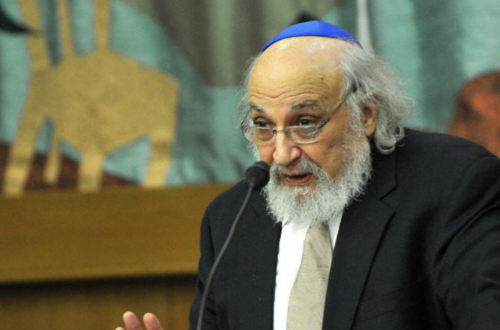In Contemporary Left Antisemitism David Hirsh extends and consolidates more than a decade’s pioneering work on this topic. He offers a powerful critique of antisemitism on the left, focusing in particular on recent events in the Labour Party, the academic boycott saga, and the relationship between antisemitism and antizionism.
In the prologue he captures one of the strangest aspects of antisemitism, its ability to shapeshift, to reflect quite opposed prejudices. Antisemitism can strike a chord with those who despise tradition – or with those who fear the new. Jews are blamed for being outsiders – and for assimilating too successfully. Over time opposition motivated by religious difference shifted into hatred based on race. Most recently antisemitism has often manifested itself through hostility to Israel, and may be disguised with an antiracist veneer:
Some people who love London’s relaxed, diverse antiracism look for an ‘other’ against which to define themselves. They find Israel. (xvi)
Israel/Zionism inherits the role played by Jews in more traditional conspiracy theories, and is credited with a quite disproportionate power and influence in the world, as well as an exaggerated malignity. Hostility to Israel becomes a marker of identity, a ‘progressive’ badge of honour.
The opening chapter deals with the ‘Livingstone formulation’, a term coined by Hirsh to describe the way in which Ken Livingstone, and others, answer accusations of antisemitism with the countercharge that the accuser is weaponising this serious issue order to stifle criticism of Israel. Like most readers of Harry’s Place I’m familiar with much of the ground Hirsh covers, at least in outline. However as I read, I was repeatedly struck by the crispness and clarity with which he summed up key arguments. Here, for example, he demonstrates the perversity of those seeking to align Zionism with Nazism, whether by accusing Israelis of Nazi-like policies, or (like Ken Livingstone) by finding some philosophical affinity or alliance between them.
But politically, the gulf between trying to make Germany Jew-free by finding places to deport them to, on the one hand, and ‘supporting Zionism’, on the other, is unbridgeable. (p. 18)
And here’s his trenchant judgement on Jenny Tonge:
Her defence against a charge that she has employed antisemitic conspiracy theory is to rely on antisemitic conspiracy theory: the claim that there is a hugely powerful singular lobby which mobilizes Jewish victim-power ruthlessly against her and other ‘critics’ in the interests of the state of Israel. (p. 22)
Hirsh offers several explanations for the odd way in which some on the left, most of whom will insist that they strongly oppose antisemitism, fall prey to it. Ironically the very horror of the Holocaust may be one factor. The overwhelming evil of the Nazi genocide made antisemitism such a taboo that it became more difficult to acknowledge (and thus deal with) milder forms of prejudice, allowing it to gain a stronger foothold (p. 27). In a further irony, this means that those who recognize and condemn antisemitism are likely to be cast as the real villains, not the antisemites themselves.
In our time, a person who raises the issue of antisemitism is more clearly recognizable as belonging to the wrong crowd than a person who stumbles into actual antisemitism. (p. 52)
With this problem in mind, Hirsh later reminds the reader that antisemitism certainly does not always manifest itself as conscious murderous hatred:
Hatred may be a sufficient condition for antisemitism, but it is not at all a necessary one: antisemitism is also, and primarily, a matter of what people do and of what consequences their actions have. (p. 138)
The academic boycott is just one example of an action which may be deemed (though not of course by all) as antisemitic even when driven by good intentions. I found the chapter on the legal case brought by Ronnie Fraser against the UCU particularly compelling; Hirsh charts a whole series of incidents and complaints that the tribunal, which found against Ronnie Fraser, seemed to brush aside. He identifies an apparent inconsistency between the tribunal’s insistence they weren’t in the business of defining antisemitism, and the rather less neutral implications of their verdict, in particular their accusation of bad faith:
The tribunal meant that saying that the boycott campaign brought with it a culture of antisemitism was in fact a bad-faith attempt to silence criticism of Israel. The tribunal responded with a legally binding Livingstone Formulation. (p. 155)
One of the most serious aspects of the case was the role played by Bongani Masuku, given a platform at a UCU event despite his hate speech against South Africa’s Jewish community. It’s good to note that this well-earned judgement against Masuku has recently been upheld by South Africa’s Equality Court.
A recurring theme in the book is the problem of defining antisemitism. Its relationship with antizionism lies at the heart of most debates on this topic. Few would deny that there is some intersection between the two, but whereas antizionists tend to paint antisemitism as a marginal problem within their networks, others (not surprisingly including many Zionists) tend to see limited scope for an antizionism which is free of antisemitism. Hirsh identifies some of the many different ways in which antizionism may slide into racism:
Hostility to the idea, existence and policies of Israel comes from various sources, and it is not the same as hostility to Jews. Some manifestations of this hostility can nevertheless throw up a politics and a set of practices which create common-sense notions of Israel as a unique evil in the world; they can thereby set people up for a fight with the Jews – those Jews, anyway, who prefer not to disavow Israel by defining themselves as antizionist. (p. 185)
It’s certainly possible to draw a distinction between antisemitic and antiracist antizionism; however that boundary is not always well policed. Hirsh reminds the reader that it took some time for many on the left to see a problem with Gilad Atzmon, and also invokes the bizarre case of Michael Neumann, a philosophy professor at Trent University in Canada. Within anti-Israel circles the problem of indifferent carelessness is as significant as active antisemitism. However few articulate that indifference as explicitly as Neumann:
If Arab antisemitism persists after a peace agreement, we can all get together and cluck about it. But it still won’t do Jews much actual harm . . . . Israel has committed war crimes. It has implicated Jews generally in these crimes, and Jews generally have hastened to implicate themselves.This has provoked hatred against Jews. Why not? Some of this hatred is racist, some isn’t, but who cares? Why should we pay any attention to this issue at all? (p. 188)
I assume many antizionists would see a problem here too. However, as Hirsh points out, there are still traps one may fall into unwittingly. One of these relates to the circulation of antisemitic tropes. Hirsh offers a careful account of what processes may be at work in the creation and propagation of an image depicting a Jaffa orange from which blood is dripping:
The combination of Jews, food and non-Jewish blood creates a graphic, emotive and powerful image. If you eat the Jaffa oranges that the Zionists are trying to sell you, you will metaphorically be drinking the blood of their victims. (p. 207)
Hirsh finds it difficult to accept that the echoes of the blood libel are a simple coincidence. However he thinks it unlikely that those spreading, even creating, this meme are purposefully invoking an antisemitic conspiracy theory. Here is his own explanation:
The third possible kind of explanation is that there is some sense in which antisemitic themes are deeply embedded in the culture, and elements present themselves unconsciously to people looking for emotive images which can drive us to act against Israel. The mechanism of this cultural unconscious, how and why it works, how and why it is so often repeated, is one element of the relationship between hostility to Israel and antisemitism which requires further research and thought. But many antizionists are not prepared to think it through. Frequently, the response to the observation that some of their imagery mirrors old antisemitic themes is disdainful denial followed by a counter-allegation of bad faith. (p. 207)
Yet again it’s the accusation of antisemitism which is seen as truly offensive.
Contemporary Left Antisemitism is a hugely useful resource for anyone interested in this topic; it’s powerfully and passionately argued – but it’s also forensic and precise. Here Hirsh comments on the complexities involved when trying to draw the line between legitimate criticism of Israel and antisemitism
The border between rational criticism and irrational claim is contested and difficult to define; sometimes, the same claim may be either a rational criticism or a blunt weapon, depending on how it is mobilized and in what combination; sometimes, rational criticisms and irrational libels combine in toxic, angry swirls which are difficult to de-couple and which have emergent properties which were not present before their release and combination. (p. 270)
In the final chapter, David Hirsh reflects on his personal involvement with this issue – his family history, his experiences as an academic researcher, and as a campaigner. To conclude on a similarly personal note, I was very grateful to discover Engage, and have the opportunity to learn from David Hirsh, Mira Vogel and other contributors, when I began to ask questions about the academic boycott of Israel getting on for ten years ago.

